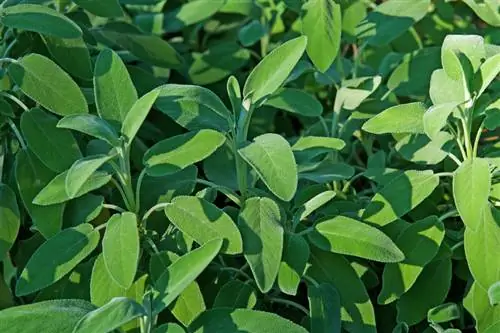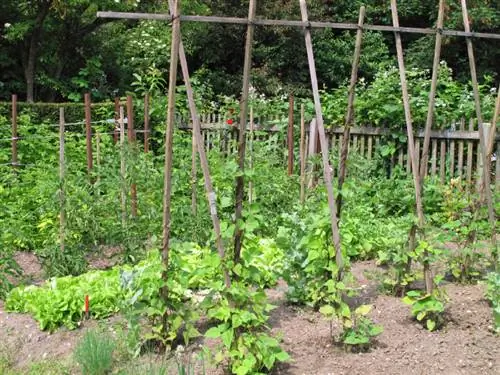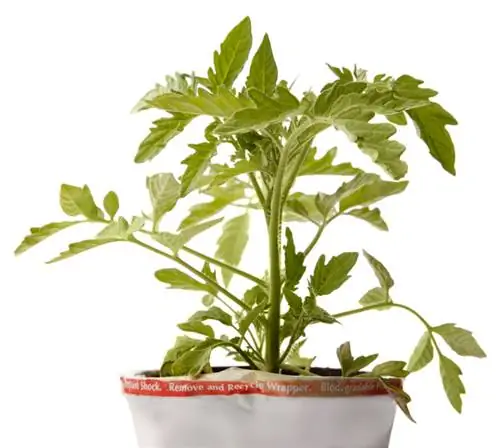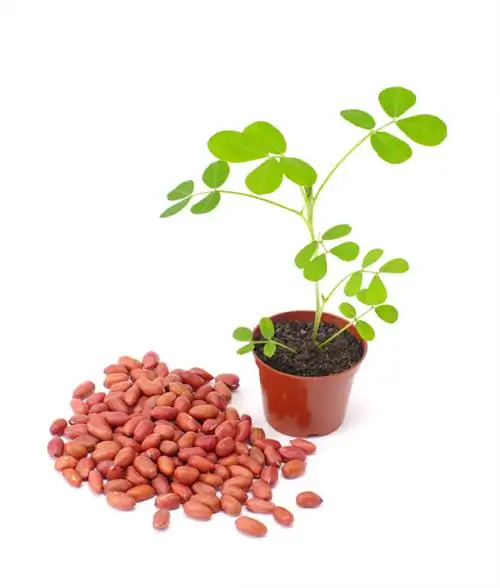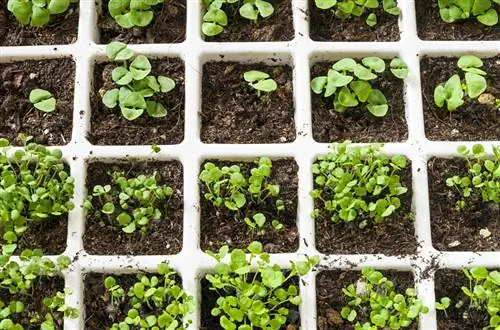- Author admin [email protected].
- Public 2023-12-16 16:46.
- Last modified 2025-01-23 11:20.
Sage impresses with a delicately spicy aroma, shimmering silver leaves and splendid pink-white flowers. Reason enough to grow the Mediterranean herb plant in the bed and on the balcony. All fundamental questions about how to properly grow sage are answered below.
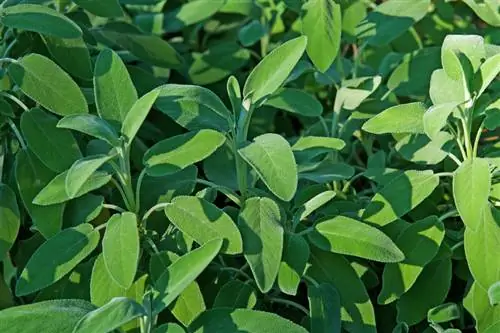
How should you grow sage successfully?
To plant sage successfully, choose a sunny to semi-shady, warm and protected location with calcareous and clayey sandy soil. Sow seeds directly in the bed or grow young plants on the windowsill and plant them outdoors from mid-May.
Which location does sage prefer?
Regardless of its Mediterranean origins, sage has a flexible ability to adapt to climate and soil conditions. You can plant safely at this location:
- sunny to semi-shady location
- like to be warm and protected
- A sandy soil containing lime and clay is ideal
- well-drained and moderately dry
Is direct sowing an option?
Sowing seeds directly into the bed is considered the most sensible cultivation technique. The optimal time window is from the end of April to the beginning of May. To do this, prepare a fine-crumb seed bed enriched with sifted compost. Plant each seed 1.5 centimeters deep, 30 centimeters apart. Keep the bed constantly moist during the germination period, which lasts 7 to 21 days.
How does growing sage on the windowsill work?
From mid/end of February, sow the previously soaked seeds in the seed container. To do this, use a lean substrate, such as peat sand. Sieve the seeds about 1 centimeter high and moisten them with a fine spray (€27.00 on Amazon). At 18 to 22 degrees Celsius, the cotyledons emerge after 7 to 21 days.
When is planting time for sage?
The young plants that have been purchased or grown by hand are allowed to go outdoors from mid-May. In the two weeks beforehand, we recommend hardening off in partial shade for a perfect start to productive cultivation.
What is really important when planting?
When growing sage, the critical phase of growth can be successfully mastered by carefully preparing the soil. Rake the soil well at the chosen location and remove weeds, roots and stones. Then work in mature compost and horn shavings. Follow these steps:
- create a small planting pit with twice the volume of the root ball
- Unpot the sage, insert it and plant it as deep as in the growing pot
- press and water the soil
Which substrate is recommended in the pot?
For sage to thrive well in a pot, a humus-rich and well-drained substrate is recommended. Special calcareous herbal soil should be considered, enriched with a little compost and sand. You can choose to grow the plant in a mix of loamy garden soil, compost, sand, perlite or lava granules.
When is harvest time?
Since sage is a subshrub, the harvest time plays an important role in perfect cultivation. The harvest should begin at the end of May and continue steadily until mid-August. The plant then needs its branches as winter protection.
Tips & Tricks
The numerous advantages of sage include its easy propagation. Take 6-8 centimeter long head cuttings during the summer. When placed in a pot with peat sand, rooting is completed within 3-4 weeks.

